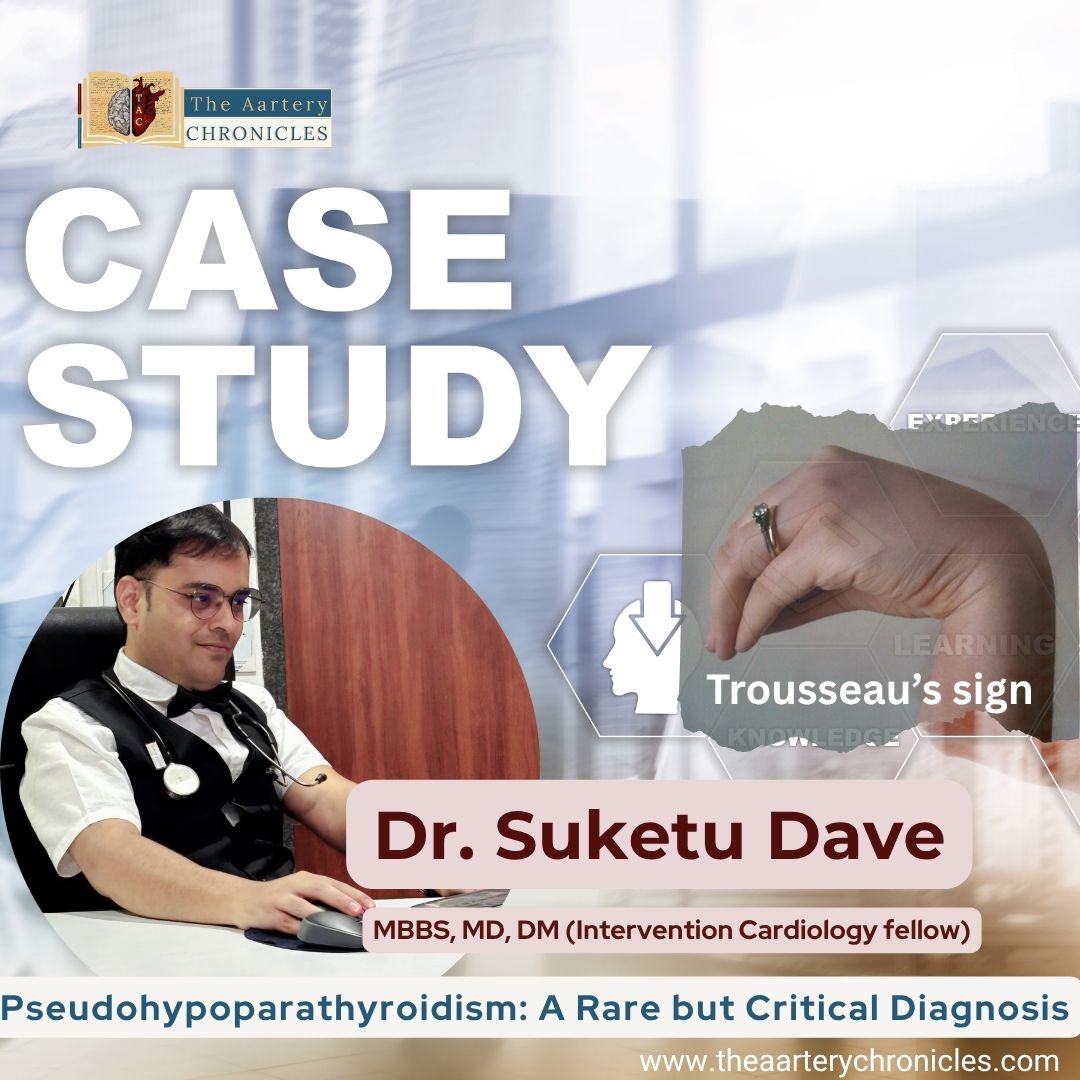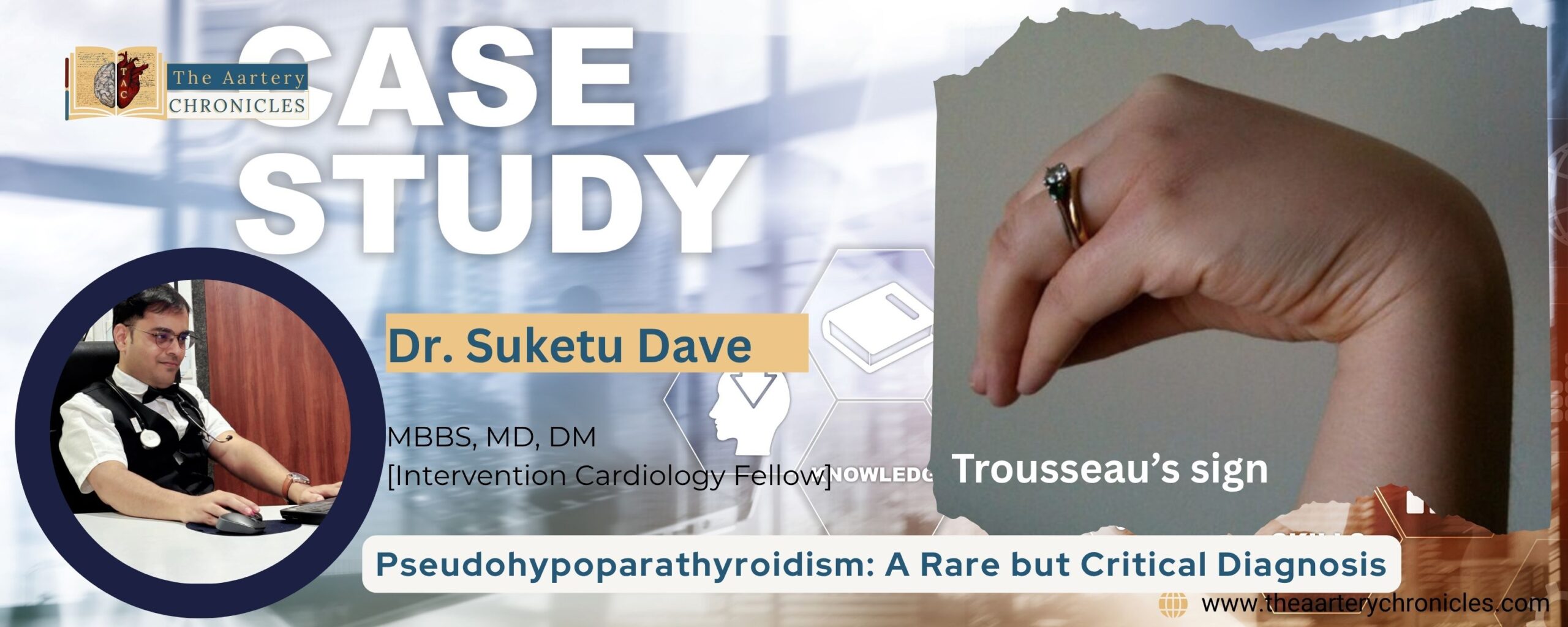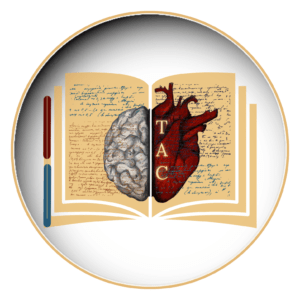

Pseudohypoparathyroidism Explained: A Real Case by Expert Dr Suketu Dave
Background
Pseudohypoparathyroidism is a rare endocrine disorder where the body resists parathyroid hormone (PTH), despite it being elevated. This leads to low calcium and high phosphate levels, mimicking hypoparathyroidism. Dr. Suketu Dave explains how to recognise it through symptoms like seizures, mood changes, tetany, and even brain calcification.
Pseudohypoparathyroidism: A Rare but Critical Diagnosis
Why would your calcium levels stay low despite high parathyroid hormone (PTH)? That’s the puzzle pseudohypoparathyroidism presents. This rare condition is often missed in routine practice, but understanding it can prevent serious complications like
- Seizures
- Cardiac arrest
In a recent interaction, Priya Bairagi from “The Aartery Chronicles” asked Dr. Suketu Dave:
“Sir, what are the signs and symptoms of pseudohypoparathyroidism?”
Dr. Dave provided a detailed explanation, which we’ve simplified and elaborated below for both clinicians and patients.
What is Pseudohypoparathyroidism?
Pseudohypoparathyroidism is a rare genetic disorder where the body is resistant to the action of PTH (parathyroid hormone). Although PTH levels in the blood are high, the hormone fails to act on its target organs, especially the bones and kidneys.
As a result:
- Calcium remains low
- Phosphate remains high
This biochemical profile mimics hypoparathyroidism, hence the name “pseudo” (false) hypoparathyroidism.
Why Is It Called “Pseudo”?
Normally, high levels of PTH should increase calcium by:
- Breaking down bone to release calcium
- Increasing calcium reabsorption in kidneys
- Enhancing vitamin D activation to improve calcium absorption from the gut
However, in pseudohypoparathyroidism, PTH receptors are resistant. So even though PTH is elevated:
- Calcium levels drop
- Phosphate accumulates
- Symptoms of hypocalcemia appear
It’s “pseudo” because hormone secretion is not the problem, hormone action is.
Signs and Symptoms of Pseudohypoparathyroidism
The clinical symptoms are due to hypocalcemia (low calcium), not PTH deficiency.
Neurological Symptoms
These occur due to low calcium levels affecting nerve and muscle function. Common signs include:
- Seizures
- Mood disturbances
- Tingling or numbness (especially in hands and feet)
- Trousseau’s sign (hand twitching when a BP cuff is inflated)
- Chvostek’s sign (facial twitching when facial nerve is tapped)
Cardiovascular Symptoms
Low calcium levels can disrupt the heart’s electrical activity, leading to potentially life-threatening issues such as:
- Arrhythmias
- Cardiac arrest (in extreme cases)
Brain Involvement
Chronic low calcium in pseudohypoparathyroidism can lead to abnormal calcium deposits in the brain, particularly in the basal ganglia:
- Basal ganglia calcification, seen on CT scans
- May lead to secondary Parkinsonism
Muscular Symptoms
Hypocalcemia can increase neuromuscular excitability, resulting in a range of muscle-related symptoms such as:
- Tetany (painful muscle spasms)
- Muscle cramps
- Fatigue
How Is It Diagnosed?
A high index of suspicion is needed when patients present with hypocalcemia symptoms. Key investigations include:
- Serum Calcium: ↓ Low
- Serum Phosphate: ↑ High
- PTH (iPTH): ↑ High
- Vitamin D levels: To rule out deficiency
- CT Brain: To detect basal ganglia calcification
The classic biochemical triad is:
Low calcium + High phosphate + High PTH
Dr. Suketu Dave’s Clinical Case Example
Dr. Dave encountered a patient with:
- Twitching fingers during BP measurement (Trousseau’s sign)
- Mood changes
- Low serum calcium, high phosphate, and elevated iPTH
- CT scan showing bilateral basal ganglia calcification
The diagnosis? Pseudohypoparathyroidism.
Treatment & Outcome
The patient was treated with:
- High-dose calcium supplements
- Activated vitamin D (calcitriol)
This corrected the calcium levels and prevented further complications like- Seizures
- Tetany
- Cardiac issues
Management Principles
- Correct hypocalcemia with oral or IV calcium
- Vitamin D supplementation (preferably active forms like calcitriol)
- Monitor for complications
- Neurologic
- Cardiac
- Renal
- Regular follow-up with monitoring of
- Calcium
- Phosphate
- PTH
“It’s the beauty of medicine...when signs don’t match labs, we must dig deeper. And that’s how rare diseases like pseudohypoparathyroidism come to light.”
Dr Suketu Dave Tweet
Conclusion: Think Beyond the Obvious
Pseudohypoparathyroidism is often missed or misdiagnosed. It demands attention to biochemical paradoxes, especially when PTH is high, but calcium is low.
Dr Dave has been working as a consultant physician, Diabetologist, and intensivist at Kamubala Polyclinic Vadodara Gujarat. He is on the verge of completing his DM in Interventional Cardiology from the highly prestigious U. N. Mehta Institute of Cardiology and Research Centre, Ahmedabad, having secured an impressive All India Rank 5 in the DM Cardiology Entrance Examination.
Disclaimer: This case is provided by expert Dr. Suketu Dave. The opinions and recommendations shared are those of Dr. Suketu Dave and are intended for awareness purposes.









